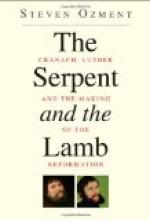“In the mean time, Pappenheim came up with his cavalry from Halle, and the battle was renewed with the utmost fury. The Swedish infantry fled behind the trenches. To assist them, the king hastened to the spot with a company of horse, and rode in full speed considerably in advance to descry the weak points of the enemy; only a few of his attendants, and Francis, duke of Saxe-Lauenberg, rode with him. His short-sightedness led him too near a squadron of Imperial horse; he received a shot in his arm, which nearly precipitated him to the ground; and just as he was turning to be led away from the tumultuous scene he received a second shot in the back. With the exclamation, ’My God! my God!’ he fell from his horse, which also was shot in the neck, and was dragged for some distance, hanging by the stirrup. The duke abandoned him, but his faithful page tried to raise him, when the Imperial horsemen shot him also, killed the king, and completely plundered him.” Pappenheim was also mortally wounded, Wallenstein retreated, and the victory was with the Swedes, but their noble king was no more.
THE SWEDISH PROPOSAL.
The plan of this illustrious king was to found here upon the Delaware a free state under his sovereign protection, where the laborer should enjoy the fruit of his toil, where the rights of conscience should be preserved inviolate, and which should be open to the whole Protestant world, then and for long time engaged in bloody conflict with the papal powers for the maintenance of its existence. Here all were to be secure in their persons, their property, and their religious convictions. It was to be a place of refuge and peace for the persecuted of all nations, of security for the honor of the wives and daughters of those fleeing from sword, fire, and rapine, and from homes made desolate by oppressive war. It was to be a land of universal liberty for all classes, the soil of which was never to be burdened with slaves.[32] And in all the colonies of America there was not a more thoroughly digested system for the practical realization of these ideas than that which the great Gustavus Adolphus had thus arranged.
Nor did it altogether die with his death. His mantle fell upon one of the best and greatest of men. Axel Oxenstiern, his friend and prime minister, and his successor in the administration of the affairs of the kingdom, was as competent as he was zealous to fulfill the wise plans and ideas of the slain king, not only with reference to Sweden and Europe, but also with regard to the contemplated colony in America.
Having taken the matter into his own hands, on the 10th of April, 1633, only a few months after Gustavus’s death, Oxenstiern renewed the movement which had been laid aside, and repeated the offer to Germany and other countries, inviting general co-operation in the noble enterprise.
Peter Minuit, a member of a distinguished family of Rhenish Prussia, who had been for years the able director and president of the Dutch mercantile establishment on the Hudson, presented himself in Sweden, and entered into the matter with great energy and enthusiasm. And by the end of 1637 or early in 1638 two ships were seen entering and ascending the Delaware, freighted with the elements and nucleus of the new state, such as Gustavus had projected.




